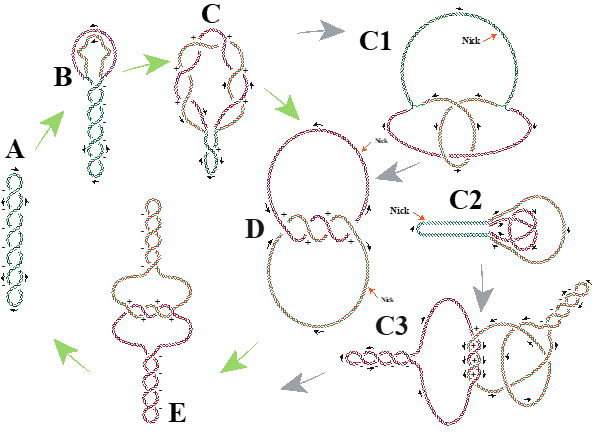
The group "Molecular Biology of Chromosomes" at Centro de Investigaciones Biológicas, in collaboration with the Center for Integrative Genomics of the University of Lausanne (Switzerland), has recently published in Nucleic Acids Research a review on the topology of DNA during replication.
Due to the helical structure of double-helix DNA, massive amounts of positive supercoils are constantly introduced ahead of each replication fork. This supercoiling inhibits progression of replication forks but various mechanisms evolved that permit very efficient relaxation of that positive supercoiling. Some of these mechanisms lead to interesting topological situations where DNA supercoiling, catenation and knotting coexist and influence each other in DNA molecules being replicated.
In this publication, the authors review fundamental aspects of DNA supercoiling, catenation and knotting when these qualitatively different topological states do not coexist in the same circular DNA but also when they are present at the same time in replicating DNA molecules. They also review differences between eukaryotic and prokaryotic cellular strategies that permit relaxation of positive supercoiling arising ahead of the replication forks. They end this review by discussing very recent studies giving a long-sought answer to the question of how slow DNA topoisomerases capable of relaxing just a few positive supercoils per second can counteract the introduction of hundreds of positive supercoils per second ahead of advancing replication forks.
Reference: Closing the DNA replication cycle: from simple circular molecules to supercoiled and knotted DNA catenanes. Jorge B Schvartzman, Pablo Hernández, Dora B Krimer, Julien Dorier and Andrzej Stasiak. Nucleic Acids Research (2019). https://doi.org/10.1093/nar/gkz586

